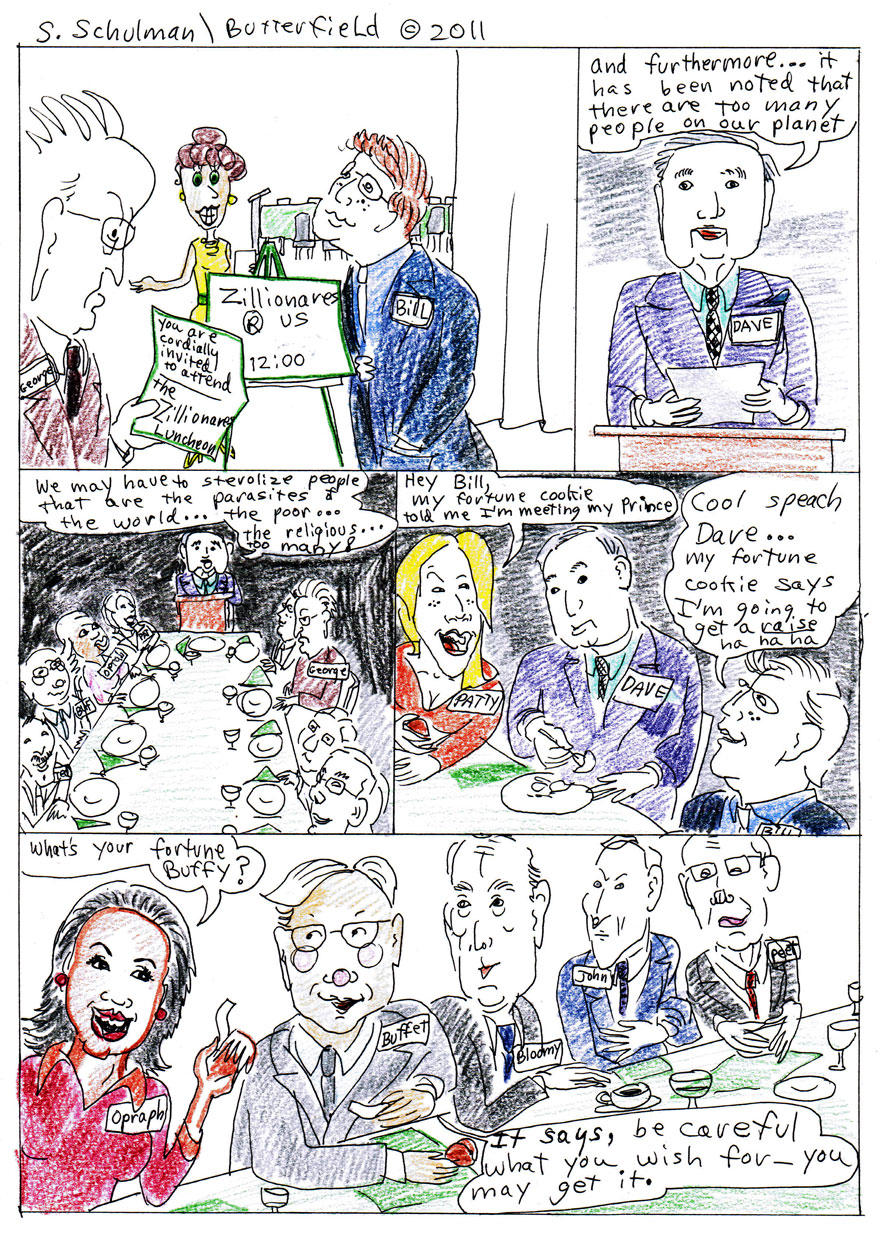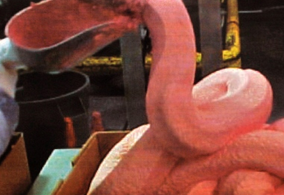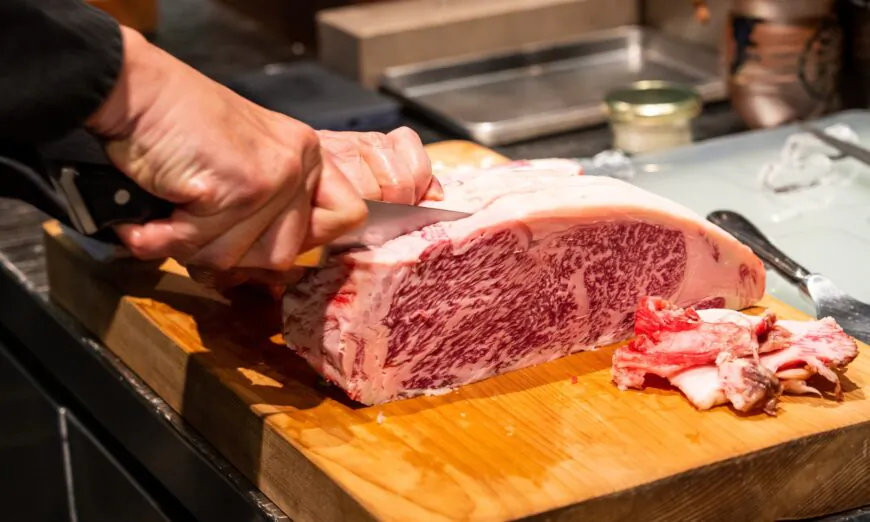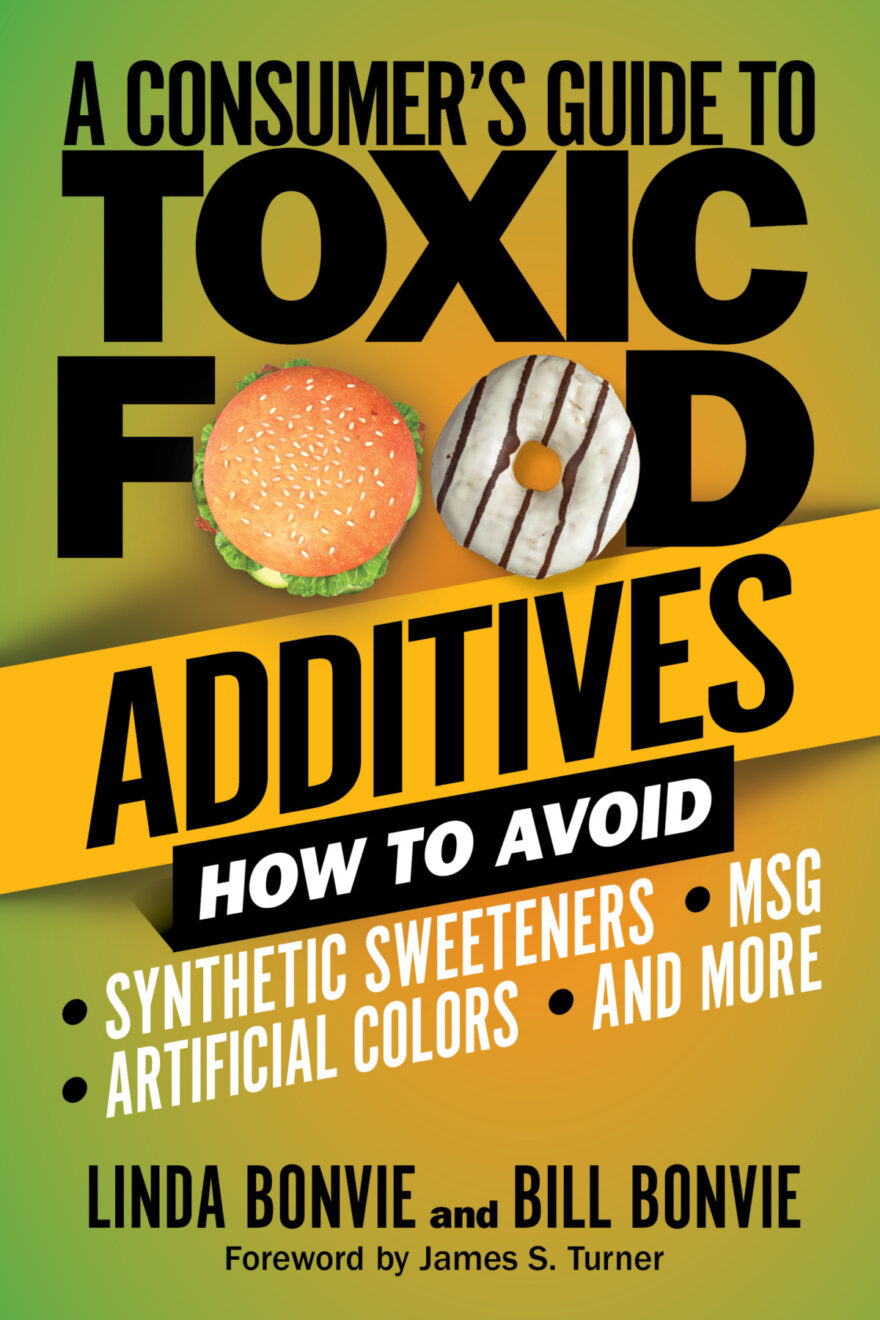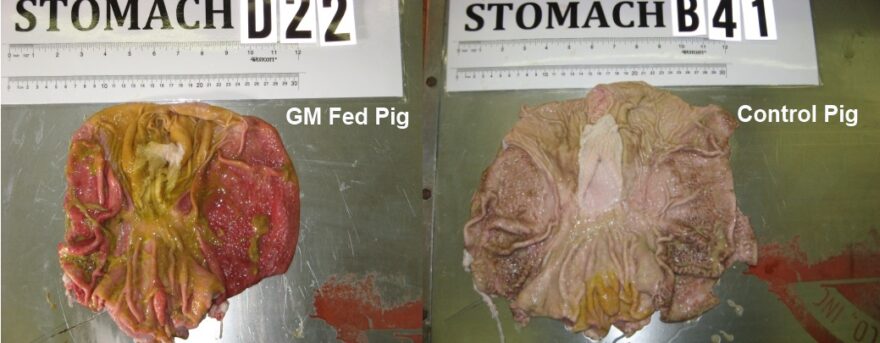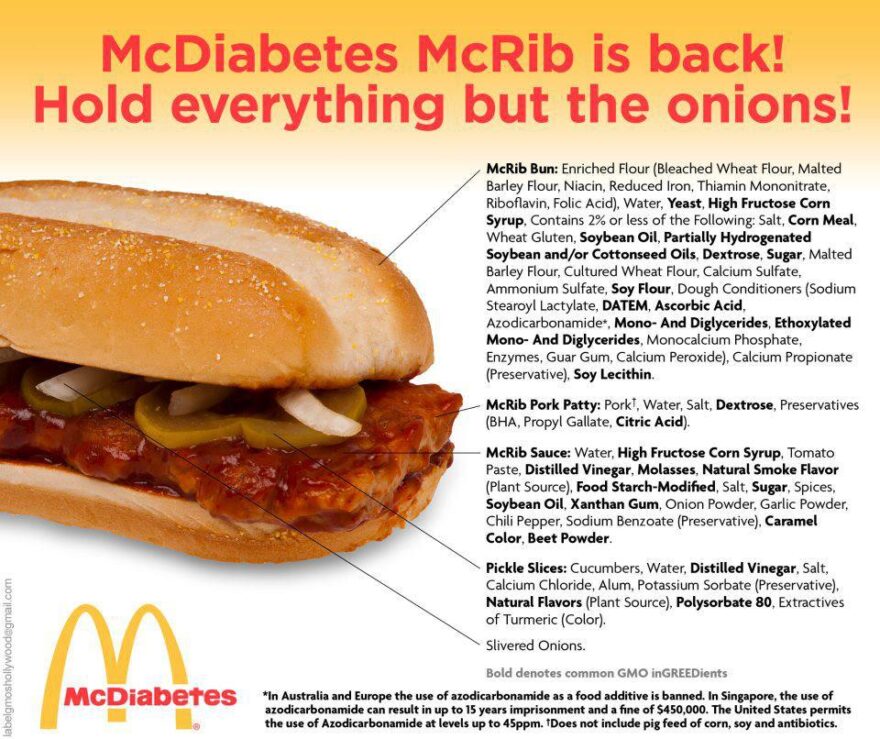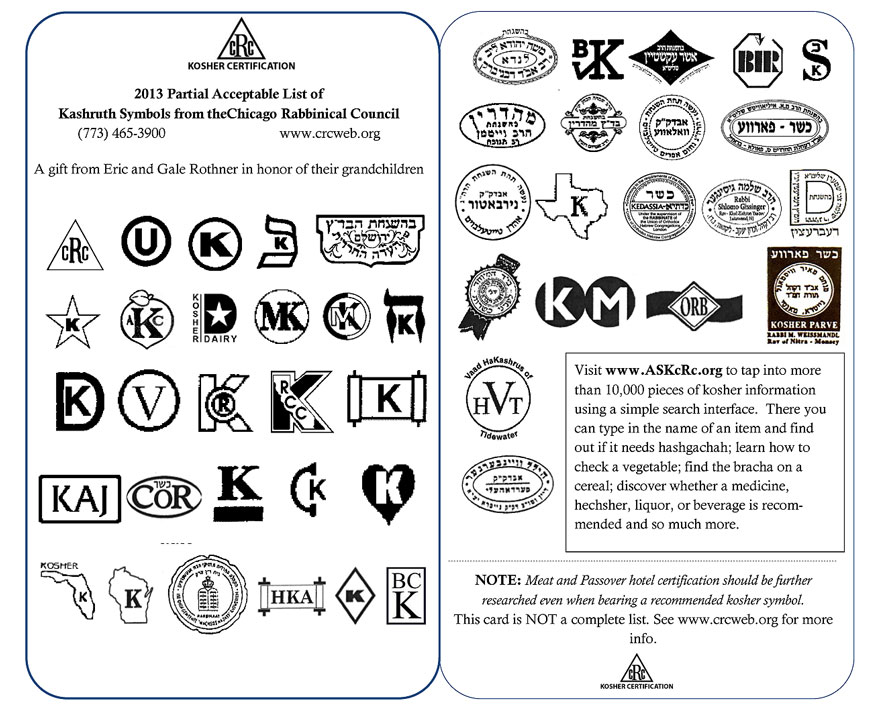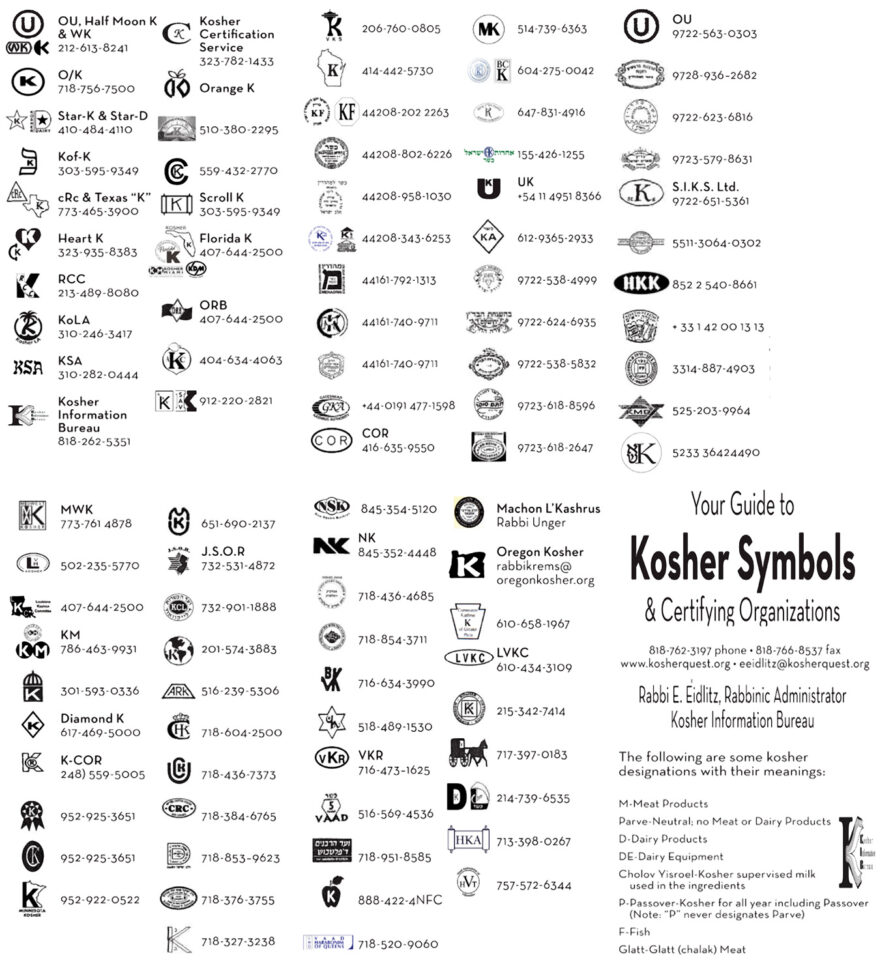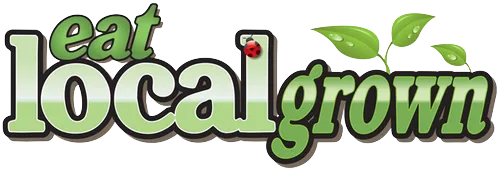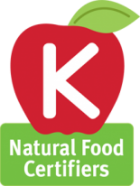What you are reading below is about conventional Agra Business, The Government Agencies which are suppose to regulate the industry and GMOs. If you shop for Kosher food you should not have these problems if you use a reliable Kosher Organization or Hechsher. |
|
|
|
 Person in the Parsha Rabbi Tzvi Hersh Weinreb An Ounce of PreventionI couldn’t believe it. One of my trusted old reference books failed me for the first time. You see, I am an old-fashioned guy and I still use books for reference rather than resorting to the electronic high-tech alternatives. Therefore, on the shelf next to my writing desk, I have three reliable works: Webster’s College Dictionary, Roget’s Thesaurus, and Bartlett’s Book of Familiar Quotations. It was the latter that disappointed me as I prepared to write this week’s Person in the Parsha.
This week’s Torah portion is Beshalach (Exodus 13:17-17:16). It contains the following verse: “If thou wilt diligently hearken to the voice of the Lord thy God, and wilt do that which is right in His eyes… I will put none of the diseases upon thee, which I have put upon the Egyptians; for I am the Lord that healeth thee.” (Exodus 15:26)
That is how Rabbi J. H. Hertz, late chief Rabbi of the British Empire, phrases it in the translation which accompanies his excellent commentary to the Pentateuch. However, Rashi’s commentary suggests a different translation.
This is what Rashi says: “Simply put, I am the Lord your physician, who teaches you Torah and mitzvot so that you will be spared illness, much as a physician would instruct his patient not to eat certain things because they may lead to his getting sick…” Thus, For Rashi, the more accurate translation of the end of our first is not “I am the Lord that healeth thee…,” But rather, “I am the Lord thy physician.”
At this point, you must be asking yourself, “What’s the big deal? Is there any difference between “I heal you” and “I am your doctor”?
Rashi would respond, “Yes, there is a great difference between the two. ‘I heal you’ means that you are sick and I make you better, whereas ‘I am your doctor’ means that I have the ability to prevent you from getting sick in the first place.”
For Rashi, this is fundamental. The Almighty has the power to prescribe for us a lifestyle that will protect us from illness; from spiritual illness certainly, but arguably from physical suffering as well.
Rashi, of course, never knew the great physician who was Maimonides. But Rashi’s conception of a good physician as one who does not merely heal the sick, but who counsels those who are well about how to avoid disease, is identical to Maimonides’ definition of a good doctor.
Maimonides was the court physician for the Sultan Saladin in medieval Egypt. The Sultan was never ill and once called Maimonides on the carpet, as it were, and demanded of him proof that he was a good doctor. “I am never ill,” said Saladin, “so how am I to know whether you in fact deserve the reputation that you have for being a great physician?”
Reportedly, Maimonides answered: “The greatest of all physicians is the Lord, of Whom it is said ‘I am the Lord thy physician’. As proof of this, it is written ‘I will not place upon you the illnesses which I have placed upon ancient Egypt’. Who is truly the good doctor? Not the person who heals the sick from their diseases, but rather the one who helps the person from becoming sick and sees to it that he maintains his health.”
As Maimonides writes in one of his medical works, Essay on Human Conduct, “Most of the illnesses which befall man are his own fault, resulting from his ignorance of how to preserve his health – like a blind man who stumbles and hurts himself and even injures others in the process due to not having of a sense of vision.”
As I was contemplating the merits of the translation suggested by both Rashi and Maimonides, I couldn’t help but think of the old adage, “An ounce of prevention is worth a pound of cure.” My memory told me that this was another wise saying of crafty old Benjamin Franklin. But these days, I have grown increasingly distrustful of my memory and so decided to confirm the origin of those words.
Here is where the reference books with which I opened this column came into play. I reached for my trusty and well-worn Bartlett’s Familiar Quotations. I searched under “prevention,” “cure,” and even “ounce,” but to no avail. Then I looked up “Franklin, Benjamin,” and found all sorts of words of wisdom but nothing about “an ounce of prevention.”
Google was my next resort. And there I indeed confirmed that it was Benjamin Franklin who echoed an important Jewish teaching when he said, “An ounce of prevention is worth a pound of cure.”
But there is more to be learned from the verse in this week’s Torah portion which we have been pondering: That the Almighty describes Himself as a healer or physician is more than just a lesson in the importance of living the kind of life that avoids the very real physical suffering that is often the consequence of an immoral life.
The metaphor of “physician” also makes a strong statement about the nature of the relationship between the Almighty and us, his “patients.”
If the verse would read, “If thou wilt diligently hearken to the voice of the Lord… for I am the Lord thy Master,” that would suggest that He demands our obedience in order to assert His own authority. But by urging us to “hearken to His voice” because He is “our physician,” we gain an entirely different view of why we should be obedient. As Malbim, a 19th century rabbinic commentator, puts it, “A physician, like a master, demands obedience, but only for the purpose of securing the patient’s welfare.” Thus, the divine commandments are to be seen as being for our own benefit, for our own ultimate well-being.
The image of a divine healer is one of the special gems to be found in Parshat Beshalach, which is a rich treasury of such images. How helpful it is for the Jew to experience a life of Torah and mitzvot as a gift given to him by a divine being who is concerned with his benefit, and how meaningful it is to know that the observant life is designed to avoid every manner of illness and to promote spiritual health and material wellness.
|
|
Bill Gates and the Rockefeller Foundation “Another Final Solution”
Outside of a conference room a sign states: “Zillionaires R Us 12:00″
”Alfred Ploetz founded the German Society of Racial Hygiene in 1905. However, a eugenic social agenda only gathered support after the humiliating loss of WWI, when Germans felt beset by adversaries both outside and inside their borders.In 1927, the Rockefeller Foundation provided funds to construct the Kaiser Wilhelm Institute for Anthropology, Human Heredity, and Eugenics in Berlin, which came under the directorship of the appropriately named Eugen Fischer. Adolf Hitler read Fischer’s textbook Principles of Human Heredity and Race Hygiene while in prison at Landsberg and used eugenical notions to support the ideal of a pure “Aryan” society in his manifesto, Mein Kampf (My Struggle).When Hitler came to power in 1933, he charged the medical profession with the task of implementing a national program in race hygiene. The first key element was the enactment, in 1934, of a law permitting involuntary sterilization of feebleminded, mentally ill, epileptics, and alcoholics. ERO Superintendent Harry Laughlin’s model sterilization law was closely modeled, and his contributions to race hygiene were recognized with an honorary degree from the University of Heidelberg. The “marriage laws” of 1935 prohibited unions between “Aryans” and Jews, as well the eugenically unfit.
By the outbreak of WWII, in 1939, an estimated 400,000 people had been sterilized. However, in 1940 the need for hospital beds for wounded soldiers prompted a “final solution” for “lives not worth living.” Psychiatrists and medical doctors identified more than 70,000 mental patients who were poisoned with carbon monoxide in extermination centers at psychiatric hospitals.
After gassing of mental patients ceased in 1941, medical and other personnel with euthanasia experience were reassigned to concentration camps in Poland, where hydrogen cyanide gas was used to kill Jews, gypsies, Slavs, and Social Democrats.
Gates and Buffett are major funders of global population reduction programs, as is Turner, whose UN Foundation was created to funnel $1 billion of his tax-free stock option earnings in AOL-Time-Warner into various birth reduction programs in the developing world. The programs in Africa and elsewhere are masked as philanthropy and providing health services for poor Africans. In reality they involve involuntary population sterilization via vaccination and other medicines that make women of child-bearing age infertile. The Gates Foundation, where Buffett deposited the bulk of his wealth two years ago, is also backing introduction of GMO seeds into Africa under the cloak of the Kofi Annan-led ‘Second Green Revolution’ in Africa. The introduction of GMO patented seeds in Africa to date has met with enormous indigenous resistance.[/wpex]
|
|
Monsanto GMO FOODS Products List – World Wide – Boycott All GMO Foods! TOP |
|

GMO created foods are biological weapons“We have a greenhouse full of corn plants that produce anti-sperm antibodies,” said Mitch Hein, president of Epicyte, a California-based biotechnology company.
By Luis R. Miranda The Real Agenda June 1, 2011 https://real-agenda.com/world-3/gmo-created-foods-are-biological-weapons/#sthash.LBPJ8fpH.dpbs
Genetically modified organisms (GMOs) used to create food and crop seeds are true biological weapons to create infertility worldwide. There are several companies working in the field of biotechnology and nanotechnology, which exist for the sole purpose of studying, experimenting and creating genetically modified organisms that cause infertility in animals, plants and humans. The most famous of all the companies that produces GMO seed is Monsanto, whose executives have publicly said that they want Monsanto to become the only producer of seeds in the world and that no food should be grown that does not come from seeds manufactured by their company.
Monsanto is joined by other giants of biotechnology and chemistry such as Cargill, DuPont and ConAgra. But the creation and application of transgenic organisms is not limited to these multinational corporations. There are smaller contractors who do the same work, perhaps with more impressive results due to the expertise of its work. This is the case of Epicyte, a company in California, whose president has shown his satisfaction to be in possession of massive quantities of agricultural products infested with GMO ingredients, that after being consumed would cause the sterilization of those who ingest and absorb his company’s GMO ingredients.
A May 28 report states that the Codex international organization, founded by the United Nations, which regulates all foods, minerals and herbs in the world, does not believe that GMO products are food, and this places foods with these ingredients in a different place than food produced naturally, and as such, can be used for various practices, including birth control and the creation of infertility in a nation or people.
In one of his publications, the Salem News indicates that there are efforts at the local, regional, national and international levels to identify and label GMOs in products for human consumption, but governments and corporations refuse to accept such a request. After the implementation of Codex Alimentarius in 2009 the will of the big companies came true, for within the regulations set by Codex, it is clearly stated that GMOs are not considered food and therefore can not be identified on the labels.
The existence of genetically modified corn was analyzed in tests conducted by the U.S. Department of Agriculture and the company Epicyte. In announcing his success in a 2001 press conference, the president of Epicyte, Mitch Hein, said his company’s transgenic corn plants, “create anti-sperm antibodies.”
Hein said the creation of transgenic organisms and their use in food could be used as a tool to solve the overpopulation problem.
In 1996, after the creation and use of genetically modified organisms in corn and other grains sent to South America, Mexico and Africa, analysis revealed that, almost immediately after the introduction of Bt corn in the United States, the birth rate had fallen in an accelerated way; only three years after the introduction of GMOs into the food supply.
Many foundations push governments to expand and accept the use of GMOs in food and in that list are of course the corn, soybeans and rice. These three are the most widely used grains in the eradication of hunger and poverty in the world. The Gates, Rockefeller, Kofi Annan’s Agra foundations, are three of the most prestigious organizations that strive to increase the supply of funds and food to the neediest populations in the world. Many of these foods contain GMOs.
The Bill and Melinda Gates Foundation spends billions of dollars “helping” with the planting and harvesting of genetically modified crops in Africa, Latin America and Asia. Do you recognize the genocide? These foundations not only evade tax collection with their alleged philanthropy, but collaborate with the murder of millions of people who do not know what their food contains, or even knowing it, have no choice but to feed themselves with GMOs.
In the United States there is a continuing struggle between consumers and the Food and Drug Administration (FDA) to label products that contain GMOs. However, the government agency has given way to the requirements of large corporations before the public’s interest. Most uninformed or misinformed people continue buying and consuming contaminated food. Meanwhile, because GMO’s are not considered as “food” by Codex Alimentarius, those who oppose the use of these ingredients in food do not understand why the FDA still allows the corporations to put it in basic grains used to manufacture most some of the products that people eat, drink and use daily.
Creating a GMO that is used in the manufacture of food consumed by humans, which was modified to sterilize, is essentially an example of the use of a biological weapon with the sole aim of reducing world population by stealth. Well, this is no longer a secret. GMO foods are not considered by Codex Alimentarius as “food”, but at the same time it allows large and small biotech companies to use them in making consumer products worldwide. The purpose is very clear. About the author: Luis Miranda Luis Miranda is the Founder and Editor-in-Chief at The Real Agenda. His career spans over 17 years and almost every form of news media. He attended Montclair State University’s School of Broadcasting and also obtained a Bachelor’s Degree in Journalism from Universidad Latina de Costa Rica. Luis speaks English, Spanish Portuguese and Italian.
|
|

Federal Judge Upholds Florida Ban on Lab-Grown MeatAnalysis by Dr. Joseph Mercola
Story at-a-glance
In a landmark ruling, the U.S. District Court in the Northern District of Florida upheld a state law banning the sale and distribution of lab-grown or “cultivated” meat.1 This law, enacted by the Florida Legislature, specifically prohibits companies from selling any meat or food product developed from cultured animal cells, like those grown in bioreactors.
The case centered on Upside Foods, a company at the forefront of cultivated meat technology, which argued that its lab-grown chicken should be treated like conventional poultry under federal law. However, under Florida’s new regulations, these products are barred from markets statewide.
For Upside Foods, this means any continued efforts to distribute their products in Florida could result in criminal penalties, civil fines and stop-sale orders. With this ruling, the court’s stance signals support for traditional meat production over cell-cultured alternatives in the Sunshine State.
Upside Foods’ Challenge to State RegulationUpside Foods petitioned the court for an injunction to stop the ban’s enforcement, claiming that Florida’s restrictions contradicted federal law, namely the Poultry Products Inspection Act (PPIA). They argued that the PPIA gives the U.S. Department of Agriculture (USDA) exclusive authority over poultry inspection and labeling, which should extend to their cultivated chicken products.2
Upside Foods also cited its history of marketing and distributing lab-grown chicken in major markets like Miami, claiming that the Florida ban has hampered its business plans, including partnerships with chefs and local events.
However, during the court hearing, the judge found that Upside Foods failed to show its lab-grown chicken fell under USDA definitions of “poultry” or “poultry products” as intended in federal law, making it unlikely to succeed in its argument that federal law overrides state regulations.
Federal law defines poultry products as any carcass or product made from a bird, but the judge found this definition did not clearly encompass cultivated meats developed from cells instead of whole animals. Without a precise federal standard for cultivated meats, the judge ruled that Florida’s law could stand because it does not directly contradict any federal law regarding poultry.3
In his judgment, Chief Judge Mark E. Walker observed that since the USDA has yet to issue specific standards for cell-based meats, Florida has the authority to regulate these products as it deems appropriate. This ruling suggests that, for now, individual states have discretion in deciding how or whether cultivated meats can enter their markets. Food Safety, Labeling and Ingredient Standards at IssueUpside Foods also argued that Florida’s ban imposed inconsistent standards regarding ingredient labeling and food safety. Under the PPIA, only the USDA sets requirements for the labeling and composition of poultry products in the U.S. However, the judge did not find the ban imposed any new ingredient standards that would conflict with federal law, as it outright prohibits lab-grown meat rather than imposing complex labeling requirements.
The court noted that without specific federal guidelines for cultivated meat, there was no basis to conclude that Florida’s ban on the product’s sale created an inconsistent or “additional” ingredient requirement. Therefore, the judge upheld that Florida’s law does not impose conditions in conflict with the PPIA’s inspection and labeling requirements, allowing the state to exclude lab-grown products from shelves without breaching federal regulations.
This case highlights the ongoing debate over whether lab-grown meat will be regulated and accepted across U.S. markets, or if states will continue setting their own standards for such products. The court’s decision sets a precedent that could embolden other states to pass similar laws restricting lab-grown foods.
“We are not surprised by the judge’s rejection of Upside’s preliminary injunction,” Florida Sen. Jay Collins told Children’s Health Defense. “The dangers of cultivated meat far outweigh any misleading environmental claims. Floridians will not be lectured by billionaires like Bill Gates on how to feed their families.”4
|
|
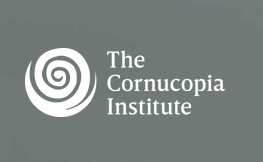
The Organic Watergate: Advocates Condemn Corruption and USDA’s Cozy Relationship with Corporate Agribusinesses in OrganicsMay 18th, 2012 https://www.cornucopia.org/2012/05/the-organic-watergate-advocates-condemn-corruption-and-usdas-cozy-relationship-with-corporate-agribusinesses-in-organics-2/#more-5306
Cornucopia, WI — The nation’s leading organic farming watchdog, The Cornucopia Institute, is challenging what it calls a “conspiracy” between corporate agribusiness interests and the USDA that has increasingly facilitated the use of questionable synthetic additives and even dangerous chemicals in organic foods. In its new white paper, The Organic Watergate, Cornucopia details violations of federal law, ignoring congressional intent, that has created a climate of regulatory abuse and corporate exploitation.
When Congress passed the Organic Foods Production Act of 1990 it set up an independent advisory panel, the National Organic Standards Board (NOSB) that, uniquely, has statutory power. Any synthetic input or ingredient used in organic farming or food production must be reviewed by the NOSB to assure that it is not a threat to human health or the environment.
The Cornucopia report charges the USDA with “stacking” the NOSB with agribusiness executives that all too often have “sold out” the interests of organic farmers and consumers.
“The organic community came together and actually asked the government, in order to maintain a level playing field and organic integrity, to regulate our industry,” said Mark A. Kastel, Codirector of The Cornucopia Institute. “How many other industries have ever asked the federal government for tough regulations and enforcement?”
In order to placate concerns of federal involvement in the nascent organic industry, Congress specifically earmarked the majority of the 15 seats on the NOSB for farmers, consumers, scientists and environmentalists as a way to balance the power of commercial interests involved in organic food manufacturing, marketing and retail sales.
“Many in the industry generally thought this system of shared power, with regard to synthetics in organics, was working until we received a wake-up call at the NOSB’s meeting late last year in Savannah, Georgia,” Kastel noted.
At the Savannah meeting a giant Dutch-based multi-national conglomerate, Royal DSM N.V./Martek Biosciences, partnered with the nation’s largest dairy processor, Dean Foods, to muscle through approval of DHA/ARA synthetic nutrient oils. The additives, derived from genetically mutated algae and soil fungus, are processed with petrochemical solvents, grown in genetically engineered corn, and formulated for use in infant formula, dairy and other products with a myriad of other unreviewed synthetic ingredients.
“All these elements of the Martek Biosciences products, along with outstanding safety and efficacy concerns, made them inappropriate and illegal in organics,” said Charlotte Vallaeys, Director of Food and Farm Policy for Cornucopia. “So after witnessing this travesty, we decided to take a closer look at how other synthetic additives have been approved for use in organic foods in the past.”
What The Cornucopia Institute investigation found is disturbing to many organic industry stakeholders. Since the NOSB was not constituted by Congress to be a scientific body, it relies on legally mandated technical reviews, by impartial scientists, of any synthetic materials that are petitioned for use in organics.
Cornucopia found that a small handful of scientists, working for corporate agribusiness, supplied the “independent” analyses to the board. In one example, an executive for Ralston Purina/Beech Nut, Dr. Richard Theuer, authored 45 of 50 technical reviews during a two-year period in the 1990s.
As a case study Cornucopia used the food ingredient carrageenan, a stabilizer and thickening agent that was initially approved for use in organic food in the mid-1990s. Theuer, and two other agribusiness-related food scientists, reviewed carrageenan without emphasizing its impacts on human health and the environment. Carrageenan, derived from seaweed, has been widely used in conventional foods for decades.
“Carrageenan is a well-documented inflammatory agent that has been found, in thousands of experiments in human cells and animals, to cause harmful effects, and low molecular weight carrageenan has been recognized by the World Health Organization’s International Agency for Research on Cancer and the National Research Council of the United States as a possible human carcinogen,” said Dr. Joanne Tobacman, a leading researcher on carrageenan and its human health impacts at the University of Illinois at Chicago.
Low molecular weight, or “degraded,” carrageenan has been found, by industry research, to contaminate food-grade carrageenan. Other research has indicated that digestion, heating, bacterial action, and mechanical processing can increase the amount of degraded carrageenan obtained from higher molecular weight carrageenan. “Due to its unique chemical characteristics, there is no safe form of carrageenan,” Dr. Tobacman added.
“Those of us in the industry, who are committed to the value of wholesome, nutritious foods that has been the hallmark of the organic industry, need the NOSB and the USDA to carefully and impartially review synthetic ingredients like carrageenan,” said Michael Potter, President of Eden Foods, a Clinton, Michigan based manufacturer long viewed as an organic leader.
In an effort to remediate this ongoing scandal, in a letter to USDA Secretary Tom Vilsack, Cornucopia demanded that one of the newest appointees to the board, an executive at the giant California berry producer, Driscolls, be removed since she was placed in a slot Congress reserved for an individual who “owns or operates an organic farming operation.”
“We have seen the USDA, in the past, appoint an executive from General Mills, as an example, to a consumer slot on the board. This gross scoffing at the law Congress passed as a safeguard against corporate domination needs to end right now,” Kastel said. “We expected better from the Obama administration. Either the USDA will immediately remediate this problem or we will defend the organic law in federal court.”
Cornucopia’s white paper documents the long-term abuse of congressional intent, by stacking the board with agribusiness operatives, an illegal practice that has stretched over the past three administrations.
Another request in Cornucopia’s letter to Secretary Vilsack was to reform the selection of independent scientists reviewing synthetics in organics, stating that the industry needs an impartial board and the board needs truly impartial expert advisors.
“I wish I was making this up, but one of the newest contractors to fulfill this review function is The Organic Center, the nonprofit offshoot of the Organic Trade Association, an agribusiness lobby group,” Kastel added. “This is the proverbial fox watching the organic chicken coop.”
The Organic Center’s board is chaired by Mark Retzloff, President of Aurora Dairy, a giant factory farm milk producer bottling private-label organic milk for Walmart, Costco and Target. Aurora was found by the USDA in 2007 to have “willfully” violated 14 tenets of federal organic law—likely the largest scandal in organic industry history.
Other members of the Organic Center’s leadership reads like a Who’s Who of giant corporations involved in organics, including four individuals associated with Dean Foods and their WhiteWave division (Horizon and Silk).
“The Organic Center board members have worked, over the years, for many of the very companies seeking approval for use of synthetics in organic food,” noted Cornucopia’s Vallaeys. “Talk about a conflict of interest.”
Despite these problems, Cornucopia’s report is bullish on organics and hopeful that the situation at the USDA can be turned around. There are fewer than 300, mostly benign, non-organic and synthetic compounds that have been approved for use in organics. That number is dwarfed by the many thousands of chemicals used in conventional food production, many of them highly toxic and carcinogenic.
“We implore consumers not to reject organics because a handful of corporations have acted recklessly and the USDA has failed to do their legally mandated job. Organic farmers, and their ethical processing partners, need your support now more than ever,” Kastel added. “And health conscious families deserve authentic organic food.”
The Cornucopia Institute is collecting signed proxies, downloadable from their website’s home page, asking organic industry stakeholders, including farmers and consumers, to sign the proxy and join in the demand that the USDA operate the organic program legally.
The growing dispute over synthetic ingredients is likely to be a hot topic at the next meeting of the National Organic Standards Board, set for May 22-25 in Albuquerque, NM.
“We know that carrageenan is up for review at this meeting and we hope the NOSB will revisit their controversial decision on Martek’s DHA/ARA. We urge the board to take this opportunity to reinforce consumer confidence in the organic label,” said Kastel.
|
|

Why You Can No Longer Trust The USDA Organic LabelSeptember 19, 2013 by NATASHA LONGO https://preventdisease.com/news/13/091913_Why-You-Can-No-Longer-Trust-The-USDA-Organic-Label.shtml
“USDA Organic” is simply a marketing term those who take government ethics at face value. The goal has always been to increase agricultural sales, not promote organic farming. The public seems to confide in this label through sheer ignorance. The National Organic Program (NOP) which governs the “USDA Organic” label has no interest in organic farming, improving soil, quality of the produce, or factors that pollute the environment. In another blow to their organics program that will further downgrade consumer confidence, the USDA announced this week that the agency has changed the process for exempting otherwise prohibited substances (such as synthetics) in food that carries the “organic or “made with organic” label. This decision makes it easier to continue use of artificial ingredients and substances, undermining integrity of the organic label.
According to the National Organic Program, the organic label indicates that the food or other agricultural product has been produced through methods that integrate cultural, biological, and mechanical practices that foster cycling of resources, promote ecological balance, and conserve biodiversity. Synthetic fertilizers, sewage sludge, irradiation, and genetic engineering may not be used…until now.
Under the federal organic law and prior to the announcement, there was a controlled process for allowing the use of substances not normally permitted in organic production because of extenuating circumstances. Under the Organic Foods Production Act 7 USC 6517 (e) Sunset Provision, “No exemption or prohibition contained in the National List shall be valid unless the National Organic Standards Board has reviewed such exemption or prohibition as provided in this section within 5 years of such exemption or prohibition being adopted or reviewed and the Secretary has renewed such exemption or prohibition.”
Under the law, these exemptions are authorized for a five-year period, in order to encourage the development of natural (or organic) alternatives. The exemptions are required by law to expire, known as “sunset,” unless they were reinstated by a two-thirds “decisive” majority vote of the National Organic Standards Board (NOSB) and include a public review. While this is the law, USDA has said it will no longer operate the program in this manner.
USDA organics has been hijacked by big agriculture and their food scientists for some time. Senior food scientist Toby McDonald insists that the only way to protect the population is through current and modified sterilization techniques that will make food safe for all. “Current and modified practices including irradiation and pasteurization are extremely effective in reducing harmful bacteria and pathogens in the food supply,” he proclaimed. MacDonald says that as food demand reaches its climax, proper sterilization will be necessary at all levels.” An increase of 50 percent in food demand by 2030 will require more funding into food monitoring infrastructures so that all food with the potential to produce outbreaks can be properly sterilized to prevent those outbreaks,” he added.
The USDA’s recent decision now puts the burden of identifying exempted materials for removal largely onto environmentalists and consumers. It largely suggests that the alternative media will now have to step up their efforts to identify all genetically modified and toxic sources which the USDA will eventually label as organic.
Under the new policy, an exempt material could be permitted indefinitely unless a two-thirds majority of the NOSB votes to remove an exempted (synthetic) substance from the list. The new policy allows USDA to relist exemptions for synthetic materials without the recommendation of the independent board and outside of public view, as required by current law.
This isn’t the only strike on the USDA’s public record. Just a few years ago, The Cornucopia Institute released an independent report that focused on the widespread abuses in organic egg production, primarily by large industrial agribusinesses. The study profiled the exemplary management practices employed by many family-scale organic farmers engaged in egg production, while spotlighting abuses at so-called factory farms, some confining hundreds of thousands of chickens in industrial facilities, and representing these eggs to consumers as “organic.”
So What Should Organic Farming Entail? – Free of synthetic chemicals of any kind
“The USDA’s decision minimizes all incentives for creating organic, natural alternative ingredients and lowers the standard for what consumers can expect behind the organic label. Allowing the USDA to automatically relist materials without the recommendation of the NOSB erodes the Board’s legal authority over materials decisions, a key to consumer trust in the organic label. The fact that the agency made this decision without any public input only adds to the violation felt by watchdog groups and consumers alike,”
“Potentially allowing an indefinite listing of non-natural ingredients and requiring a super-majority vote to retire a substance after five years undermines the spirit of the law for how materials head into “sunset” or retirement. It is unfair to producers trying to produce a truly organic product and it is unfair to consumers trying to make meaningful purchasing decisions. Simply put, this lowers the bar for much of the organic market. We believe USDA must reverse course and we intend to mount a fierce campaign to hold the agency accountable to the millions of Americans who expect more from the government–and the organic label.”
Organic agriculture embodies an ecological approach to farming that focuses on feeding the soil and growing naturally healthy crops, whereas chemical-intensive agriculture depends on toxic chemicals and inputs which poison the soil, as well as air, water, farmworkers and consumers. In conventional chemical agriculture there are tens of thousands of synthetic materials, including over 200 registered pesticide active ingredients used regularly
Expanding organics is literally a matter of life or death for public health, climate, and the environment. None of the largest food suppliers of our world are leading the charge to double or triple organic food and farming sales by exposing the myth of organic foods because it is not in their best interest. The industry giants will never get serious about making a societal transition to organic food and farming. The reason for this is simple: it is far easier and profitable for these conglomerates to sell conventional or even so-called natural foods at a premium price, than it is to pay a premium price for organics and educate consumers as to why “cheap” conventional and deceptive “natural food” is really more expensive than organic, given the astronomical hidden costs (health, pollution, climate destabilization) of conventional agriculture and food processing.
Sources:
Natasha Longo has a master’s degree in nutrition and is a certified fitness and nutritional counselor. She has consulted on public health policy and procurement in Canada, Australia, Spain, Ireland, England and Germany.
|
|

Lab-cultured, GMO-laden fake “meat” is a toxic abomination to be avoided at all costs24June2022 By Ethan Huff https://frankenfood.news/2022-06-24-lab-gmo-fake-meat-toxic-abomination.html
It was never enough just to tamper with your produce and grains. The biotechnology industry is now setting its sights on replacing all meat with genetically engineered (GMO) impostors, too.
Beef, poultry, fish, and dairy products are all on the chopping block as the architects behind the Great Reset shift society away from real, nutritious food and straight into laboratory abominations from hell.
Using technologies like synthetic biology and precision fermentation, mad scientists are concocting cultured “meat” synthetics along with other cell-based and gene-edited parodies of real food.
“Transitioning to cultured meat, made from animal cells grown in a petri dish, is a Great Reset goal for the global food industry,” warns Dr. Joseph Mercola. “The aim is to control populations by creating dependence on private companies that control the food supply.”
The Wellcome Trust co-founded what is known as the “EAT Forum,” which developed a concept called “The Planetary Health Diet” that will be forced on the global population – at least that which remains following the great fulling.
“It entails cutting meat and dairy intake by up to 90%, and replacing it largely with foods made in laboratories, along with cereals and oil,” Mercola further explains. Aborted baby cows are used to create fake cell-based “meat”Back in 2017, we reported about the launch of Impossible Foods, a fake meat corporation backed by Bill Gates and Google.
Not surprising was the revelation at that time that each glob of Impossible Foods fake meat mush is packed with GMOs, monosodium glutamate (MSG) derivatives, and other chemical horrors.
It turns out that Impossible Foods had been just the start of a global transition effort to eradicate real food from animals and replace it with chemical “foods” from a laboratory – and more importantly to the globalists, chemical “foods” that enrich wealthy billionaires at the expense of family farms.
Creating cultured meat, also known as cell-based meat, involves a disturbing process by which fetal bovine serum (FBS), or the blood of cow fetuses – aborted, of course – is extracted and placed in petri dishes to grow what looks and supposedly tastes like real meat.
“So, cultured beef relies on the slaughter of both cows and unborn calves, which are drained of their blood while still alive,” Mercola writes.
The end product is nothing close to the real meat, bearing a composition that is unhealthy and, quite frankly, toxic. And this is exactly what the globalists want: a sick and dying human “herd” that is easily manageable and unable, both physically and cognitively, to resist their own tyranny and enslavement.
We are almost there as our society has been drenched in toxic industrial seed oils and so-called “plant-based” foods, which contain no animal fats. These processed food products contain high levels of linoleic acid (LA), which is now understood to be a primary driver of chronic disease.
None of this would be possible without private central banks and the fraudulent stock market pumping up these endeavors with endless fiat cash infusions, by the way. The “investments” that go into creating fake meat do not reflect what actual humans want, but rather what the powers that be want for all of humanity – except for themselves, of course (assuming the globalists are even really human…).
The really disturbing part is that many of these toxic, lab-centric “foods” are being marketed as “natural.” Plant-based has become part of the healthy eating vernacular, even though it represents the opposite of real health.
“It seems that even with all the smarts and savvy in the natural products community, we have failed to understand that we are being targeted by a coordinated global campaign to force the adoption of synthetics in natural channels,” warned Alan Lewis, vice president of advocacy at Natural Grocers.
“The campaign is a spawn of the notorious GMO lobby, now emboldened and backed by technology moguls.” More stories like this one can be found at Frankenfood.news. Sources include:
|
|
This is what the US Federal Government is representing as wholesome food? Think Kosher!Pink Slime, Soylent Pink and Protein Powder
If you’re not a vegetarian already you’ll sure be after reading this; 70% of ground beef sold in the USA is ‘poisoned’ with what is now known as ‘Pink Slime’ or ‘Soylent Pink’. Pink slime is an additive composed of beef trimmings once only sold as dog food. Pink slime contains cow brain, spinal cord and neural tissue. The slime supposedly doesn’t contain fat and bone.
The trimmings are now sprayed with ammonia so they are safe to eat and added to most ground beef as a cheaper filler. The “pink slime” is made by gathering waste trimmings, simmering them at low heat so the fat separates easily from the muscle, and spinning the trimmings using a centrifuge to complete the separation. Next, the mixture is sent through pipes where it is sprayed with ammonia gas to kill bacteria. The process is completed by packaging the meat into bricks. Then, it is frozen and shipped to grocery stores and meat packers, where it is added to most ground beef.
Now that’s economic fraud. So where’s the USDA and who are they going to put in jail for this? The answer is shocking and only adds to the corruption. According to former USDA-scientist Gerald Zirnstein who coined the term Pink Slime earlier at the agency but now stepped forward as a whistleblower to raise awareness for his concern, the agency is very aware of the use of Pink Slime but prevented it to be added to the food label cause as USDA-officials with links to the meat-industry labeled it as meat.
Well, if this doesn’t make you shake your head and wonder why we don’t get rid of these idiots, than this will.
I’m not sure what makes me more angry; the fraudulent food production for profit only, or the blatant corruption rampant with government officials that are supposed to watch over the safety of our food supply.
But it gets worse. Cause if you consider to stop buying pre-packaged ground beef at your supermarket and switch to poultry you’re not going to do yourself a favor.
It’s a standard industry practice to fill chicken meat with water to gain weight up-to 1/3 of the initial slice. Why we allow this is beyond me, but the added water is labeled so it’s our own choice to buy water and pay for chicken. However, to hold the water in after it is injected in the meat a chemical is added. This chemical is made from proteins. Proteins salvaged from the bones or other left-overs from animals like beef, pork or chicken.
OK, it’s disgusting, but the added protein powder is labeled too so what’s the problem? Well, there shouldn’t be a problem if the meat-industry would stick to the simple rule; chicken-protein goes with chicken, pork-protein with pork, and beef with beef. Unfortunately that’s not the case and here corruption and profit win again.
Beef and pork protein are added to chicken meat because it’s cheaper and therefore more profitable. The industry even developed a technology to hide the dna-print of the protein to make it very difficult to detect from what animal the used protein powder originates.
This is not only again an aweful example of our terribly corrupted food production, but dangerous for those that comply to religious food rules too.
From the BBC:
Like I said at the beginning of this post. If you haven’t decided to become a vegetarian yet, you might consider it now. And I didn’t even mention the industry’s other dirty little secret; meat-glue.
|
|
Meat Glue a “dirty little secret”
|
|

Is There Meat Glue in Your Food?How restaurants may be faking your steak (or sushi)FEATURED Food Additives
(kan_khampanya/Shutterstock) Editor’s Note: Ever gone out to an inexpensive buffet and marveled at the vast display of freshly prepared, hot food just waiting to be devoured? You choose the perfectly fried tempura shrimp—that unbeknownst to you—may have been mixed with a binding enzyme called transglutaminase—otherwise known as meat glue. This is not an unlikely scenario as meat glue—though banned in the European Union—is classified by the U.S. Food and Drug Administration as “generally recognized as safe.”
In the book, “A Consumer’s Guide to Toxic Food Additives” authors Bill and Linda Bonvie reveal the many additives lurking in our everyday food and outline ways we can identify and eliminate them from our diets. Following on the heels of our excerpt about the health implications of carrageenan, this one is sure to “stick” in your mind. Meat Glue—Pink Slime’s Far More Sickening Sibling
Back in 2012, an ABC news lead story about Pink Slime (called in the industry by the more appetizing name, “finely textured beef”) struck a chord of disgust in the meat-eating public.
Petitions were formed to get the product out of the school lunch program, and celebrity chef Jamie Oliver conducted pink slime demos where he put beef scraps in a washing machine and then soaked them in ammonia and water.
Right before the slime hit the fan, however, ABC news affiliates spilled the beans about another underground meat practice. It was the use of an enzyme called transglutaminase, or, as it’s more commonly referred to, meat glue.
Now, even though meat glue has the potential to be a lot more hazardous to your health than pink slime, for some reason, the public couldn’t quite seem to wrap its head around it in the same way.
While some stories appeared in the press at the time, there were no petitions or consumers calling on the FDA or USDA to do something about it. In fact, some big-name chefs even came out in praise of meat glue.
For example, Wylie Dufresne, who was both chef and owner of the super-pricy Manhattan eatery wd~50 (which closed in 2014), was quoted in Meat Paper as saying he had “concocted all manner of playful and bizarre food products with meat glue, including shrimp spaghetti, which he made by mixing salt, cayenne, deveined shrimp, and meat glue in a blender.” “Meat glue,” Dufresne declared, “makes us better chefs.”
However, even if you’re dining at an elegant establishment like wd~50, you may want to think twice about eating “glued” food. That’s one of the problems with this stuff—the appearance of food in which it has been used can definitely be deceiving. How to Fake a Steak (or Eggs)Since 2016, a certain restaurant chain has been using the catchy slogan “You can’t fake steak” in its TV commercials. While we can’t say whether or not that particular chain’s steaks are the real McCoy, the fact is that the slogan is wrong: You can indeed fake steak—by simply using a little meat glue.
At one time, transglutaminase was manufactured entirely from the clotting agent extracted from pig or cow’s blood. Now, it’s typically made by cultivating bacteria to do the job. Most of the meat glue supplied to the food industry comes from none other than Ajinomoto—the company that brought MSG to America.
Like MSG, Ajinomoto claims that transglutaminase is “ubiquitous in nature … typically found in various plants and animals.” Where MSG is concerned, that premise really doesn’t hold much water, as “bound” glutamic acid found in things such as meat, mushrooms, or tomatoes is quite different than the free glutamic acid added to food. Now, new research has found that this might also apply to transglutaminase sprinkled on meat or seafood.
What meat glue does is to allow restaurants and manufacturers to get away with one of the most devious forms of food fakery. Even the meat industry, when it defends transglutaminase, has to acknowledge that it can be used to fool diners. Meat glue is used much more often to “fake a steak” than to make gourmet shrimp noodles, as chef Dufresne did. By sprinkling the enzyme on various scrap pieces of meat, chicken, or seafood, and then binding it tightly in plastic wrap and refrigerating it for several hours, you can turn out a picture-perfect filet mignon, solid piece of chicken, or a top-dollar-looking filet of fish. Even experts can’t tell the difference. If you’ve ever attended a banquet or a convention, or maybe even dined in a restaurant, and were served an expensive-looking steak or sushi at a bargain price, you may have wondered how that came to be. The answer is either that the restaurant owner is losing money with each meal or, more likely, that there’s a bag of meat glue in the kitchen.
The fake food industry has also found use for meat glue in a product bizarrely called “JUST Egg,” something that contains no trace of eggs. But along with brain-damaging amino acids, you will find transglutaminase listed on the JUST Egg label—yet another excellent reason to read food ingredients carefully no matter what brand names the products are given. A Pathway for Pathogens to Get Inside Your DinnerFakery aside, meat glue could be contributing to the growing epidemic of food poisoning that hits millions (the CDC puts the number at 1 in 6 Americans or around 48 million every year).
That’s because pathogens, like Escherichia coli, Listeria, and Salmonella (with many strains now antibiotic resistant) mostly appear on the surface of meat. When the outer surface is seared, even if the meat is eaten medium rare or rare, that bacteria have most likely been killed.
When multiple pieces of meat are combined, however, those pathogens could be lurking in the center. Surfaces of the meat that once were on the outside are now in the middle. If you haven’t cooked that meat thoroughly inside and out, you could be in for big trouble. The Role of Meat Glue in ‘Tight Junction Dysfunction’In 2015, researchers from Israel and Germany published a study on how “industrial food additives” could be the cause of the “rising incidence of autoimmune disease.”
Autoimmune diseases (when the body launches an attack on itself) have shown “strong evidence of a steady rise” in Western cultures over the last thirty years, the authors said. Cases of diseases such as Type 1 diabetes, multiple sclerosis, Crohn’s disease, lupus, and rheumatic and celiac diseases are climbing every year.
The study, conducted by Professor Aaron Lerner and Dr. Torsten Matthias, called out transglutaminase as one of the commonly used food additives that can disrupt this internal barrier and enhance “intestinal junction leakage.”
Additionally, like manufactured glutamic acid (MSG), the authors pointed out that TG enzyme is quite different from the transglutaminase found naturally in the human body. Its use in the food industry, they warn, is also expanding on a “great scale.”
Celiac disease sufferers in particular, who are no doubt taking pains to avoid foods containing gluten, should also be aware of what these researchers believe is a link between their condition and meat glue, which may possibly explain the surge in celiac disease. “Several observations have led to the hypothesis that microbial transglutaminase is a new environmental enhancer of celiac disease,” they noted in a 2015 report, explaining how the substance may affect the immune system and promote intestinal leakage, allowing “more immunogenic foreign molecules to induce celiac disease.”
“If future research substantiates this hypothesis,” they wrote, “the findings will affect food product labeling, food additive policies of the food industry, and consumer health education.”
In the meantime, however, consumers will remain on their own when it comes to protecting their health from this hazardous adhesive addition to their favorite dish—especially when dining out (and out of sight of what’s being done in the kitchen). Know Your Badditives and How to Avoid Them: Meat Glue (Transglutaminase)
As transglutaminase is now appearing in new products, such as the fake food called “JUST Egg,” it’s obvious that the industry is finding more and more uses for it—another reason why reading the ingredients label on any processed food is not just a good idea, but a necessity.
Linda and Bill Bonvie are sibling journalists who have spent more than two decades writing about food safety and environmental issues for magazines and newspapers. They’ve also co-authored several books including “Chemical-Free Kids” and “A Consumer’s Guide to Toxic Food Additives.” This excerpt has been adapted from “A Consumer’s Guide to Toxic Food Additives” by Bill and Linda Bonvie. To buy this book, click here.
|
|

Hard-Hitting Report: Pigs Fed GM Diet Experience Significant Health ProblemsWorld Exclusive: Evidence of GMO Harm in Pig Studyhttp://sustainablepulse.com/2013/06/11/evidence-of-gmo-harm-in-pig-study/#.UblMW9jhdbd June 11 2013 http://sustainablepulse.com/2013/06/11/evidence-of-gmo-harm-in-pig-study/#.UblMW9jhdbd June 11, 2013 in Sustainable Agriculture A groundbreaking new study [1] shows that pigs were harmed by the consumption of feed containing genetically modified (GM) crops.
GM-fed females had on average a 25% heavier uterus than non-GM-fed females, a possible indicator of disease that requires further investigation. Also, the level of severe inflammation in stomachs was markedly higher in pigs fed on the GM diet. The research results were striking and statistically significant.
Lead researcher Dr Judy Carman, adjunct associate professor at Flinders University, Adelaide, Australia,[2] said: “Our findings are noteworthy for several reasons. First, we found these results in real on-farm conditions, not in a laboratory, but with the added benefit of strict scientific controls that are not normally present on farms.
“Second, we used pigs. Pigs with these health problems end up in our food supply. We eat them.
“Third, pigs have a similar digestive system to people, so we need to investigate if people are also getting digestive problems from eating GM crops.
“Fourth, we found these adverse effects when we fed the animals a mixture of crops containing three GM genes and the GM proteins that these genes produce. Yet no food regulator anywhere in the world requires a safety assessment for the possible toxic effects of mixtures. Regulators simply assume that they can’t happen.
“Our results provide clear evidence that regulators need to safety assess GM crops containing mixtures of GM genes, regardless of whether those genes occur in the one GM plant or in a mixture of GM plants eaten in the same meal, even if regulators have already assessed GM plants containing single GM genes in the mixture.”
The new study lends scientific credibility to anecdotal evidence from farmers and veterinarians, who have for some years reported reproductive and digestive problems in pigs fed on a diet containing GM soy and corn.[3]
Iowa-based farmer and crop and livestock advisor Howard Vlieger, one of the coordinators of the study, said: “For as long as GM crops have been in the feed supply, we have seen increasing digestive and reproductive problems in animals. Now it is scientifically documented.
“In my experience, farmers have found increased production costs and escalating antibiotic use when feeding GM crops. In some operations, the livestock death loss is high, and there are unexplained problems including spontaneous abortions, deformities of new-born animals, and an overall listlessness and lack of contentment in the animals.
“In some cases, animals eating GM crops are very aggressive. This is not surprising, given the scale of stomach irritation and inflammation now documented. I have seen no financial benefit to farmers who feed GM crops to their animals.”
Gill Rowlands, a farmer based in Pembrokeshire, Wales who is also a member of the campaign group GM-Free Cymru, said: “This is an animal welfare issue. Responsible farmers and consumers alike do not want animals to suffer. We call for the rapid phase-out of all GMOs from animal feed supplies.”
Claire Robinson of the campaign group GMWatch said: “Several UK supermarkets recently abandoned their GM-free animal feed policies, citing lack of availability of non-GM feed. We call on the public to visit the new citizens’ action website gmoaction.org, where they can quickly and easily send an email to the supermarkets asking them to ensure their suppliers secure certified GM-free animal feed. This will mean placing advance orders for GM-free soy from countries like Brazil.” Study details The research was conducted by collaborating investigators from two continents and published in the peer-reviewed Journal of Organic Systems. The feeding study lasted more than five months, the normal commercial lifespan for a pig, and was conducted in the US. The pigs were slaughtered at the usual slaughter age of over 5 months, after eating the diets for their entire commercial lifespan.
168 newly-weaned pigs in a commercial piggery were fed either a typical diet incorporating GM soy and corn, or else (in the control group) an equivalent non-GM diet. The pigs were reared under identical housing and feeding conditions. They were slaughtered over 5 months later, at the usual slaughter age, after eating the diets for their entire commercial lifespan. They were then autopsied by qualified veterinarians who worked “blind” – they were not informed which pigs were fed on the GM diet and which were from the control group.
The GMO feed mix was a commonly used mix. The GM and non-GM diets contained the same amount of soy and corn, except that the GM diet contained a mixture of three GM genes and their protein products, while the control (non-GM) diet had equivalent non-GM ingredients. Of the three GM proteins in the GM diet, one made a crop resistant to being sprayed with the herbicide Roundup, while two were insecticides. Contact: Claire Robinson, GMWatch, UK: claire@gmwatch.org To phone within UK: 0752 753 6923. To phone outside UK: +44 752 753 6923 Dr Judy Carman, Adelaide, Australia Email: judycarman@ozemail.com.au Mr Howard Vlieger, Maurice, Iowa Email: studentofthesoil@mtcnet.net Notes 1. Judy A. Carman, Howard R. Vlieger, Larry J. Ver Steeg, Verlyn E. Sneller, Garth W. Robinson, Catherine A. Clinch-Jones, Julie I. Haynes, John W. Edwards (2013). A long-term toxicology study on pigs fed a combined genetically modified (GM) soy and GM maize diet. Journal of Organic Systems 8 (1): 38-54. Open access full text: www.organic-systems.org/journal/81/8106.pdf 2. Dr Judy Carman, BSc (Hons) PhD MPH MPHAA; Epidemiologist and Biochemist; Director, Institute of Health and Environmental Research, Adelaide, Australia; Adjunct Associate Professor, Health and the Environment, School of the Environment, Adelaide, Australia 3. For example: www.responsibletechnology.org/posts/wp-ontent/uploads/2012/04/Soydamage1.pdf www.i-sis.org.uk/GM_Soy_Linked_to_Illnesses_in_Farm_Pigs.php Farmer interviews in the 2012 film, Genetic Roulette: The Gamble of Our Lives, directed by Jeffrey Smith
|
|

New Study Links GMO Food To LeukemiaSunday, May 12th 2013 http://www.greenmedinfo.com/blog/new-study-links-gmo-food-leukemia
Written By: Sayer Ji, Founder  Journal of Hematology & Thromboembolic Diseases Study: Hematotoxicity of Bacillus thuringiensis as Spore-crystal Strains Cry1Aa,Cry1Ab, Cry1Ac or Cry2Aa in Swiss Albino Mice A groundbreaking new study published in the current issue of the Journal of Hematology & Thromboembolic Diseases reveals the potential “leukemogenic” properties of the Bt toxin biopesticides engineered into the vast majority of GMO food crops already within the US food supply. Last September, the causal link between cancer and genetically modified food was confirmed in a French study, the first independent long-term animal feeding study not commissioned by the biotech corporations themselves. The disturbing details can be found here: New Study Finds GM Corn and Roundup Causes Cancer In Rats Now, a new study published in the Journal of Hematology & Thromboembolic Diseases indicates that the biopesticides engineered into GM crops known as Bacillus Thuringensis (Bt) or Cry-toxins, may also contribute to blood abnormalities from anemia to hematological malignancies (blood cancers) such as leukemia.[i]
A group of scientists from the Department of Genetics and Morphology, Institute of Biological Sciences, University of Brasilia, Brasilia/DF, Brazil set out to test the purported human and environmental biosafety of GM crops, looking particularly at the role that the Bt toxin found within virtually all GM food crops plays on non-target or non-insect animal species.The research was spurred by the Brazilian Collegiate Board of Directors of the National Sanitary Surveillance Agency (ANVISA), who advocated in 2005 for evaluations of toxicity and pathogenicity of microbiological control agents such as Bt toxins, given that little is known about their toxicological potential in non-target organisms, including humans.While Bacillus Thurigensis spore-crystals have been used since the late 1960’s in agriculture as a foliar insecticide, it was only after the advent of recombinant DNA biotechnology that these toxin-producing genes (known as delta endotoxins) were first inserted into the plants themselves and released into commercial production in the mid-90’s, making their presence in the US food supply and the bodies of exposed populations ubiquitous.
What the new study revealed is that various binary combinations and doses of Bt toxins are capable of targeting mammalian cells, particularly the erythroid (red blood cell) lineage, resulting in red blood cell changes indicative of significant damage, such as anemia. In addition, the study found that Bt toxins suppressed bone marrow proliferation creating abnormal lymphocyte patterns consistent with some types of leukemia.
The researchers also found that one of the prevailing myths about the selective toxicity of Bt to insects, the target species, no longer holds true:
The study also found:1) That Cry toxins are capable of exerting their adverse effects when suspended in distilled water, not requiring alkalinization via insect physiology to become activated as formerly believed.
2) That a dose of Cry1Ab as low as 27 mg/kg, their lowest tested dose, was capable of inducing hypochromic anemia in mice – the very toxin has been detected in blood of non-pregnant women, pregnant women and their fetuses in Canada, supposedly exposed through diet.
3) Whereas past reports have found that Bt toxins are generally nontoxic and do not bioaccumulate in fatty tissue or persist in the environment, the new study demonstrated that all Cry toxins tested had a more pronounced effect from 72 hours of exposure onwards, indicating the opposite is true.
4) That high-dose Cry toxin doses caused blood changes indicative of bone marrow damage (damage to “hematopoietic stem cell or bone marrow stroma”).
The authors noted their results “demonstrate leukemogenic activity for other spore-crystals not yet reported in the literature.” They concluded:
Did you get that? Their conclusion is that it is premature to consider GM toxins to be safe in mammals. Billions have already been exposed to Bt toxins, in combination with glyphosate-based herbicide formulations such as Roundup, and yet, most biotech research scientists and industry regulators still claim they are unequivocally safe. This has much to do with the well-known relationship that biotech corporations like Monsanto have with so-called ‘check book’ science firms who are basically paid to obfuscate adverse health outcomes of their products, such as the GMO-Cancer link. [see: Monsanto-Funded Science Denies Emerging Roundup Cancer Link]
Consider also that the question of combined toxicity of Cry toxins and glyphosate-based residues within plants have not been sufficiently explored, and that glyphosate exposure has already been linked to non-Hodgkins lymphoma and hairy cell leukemia in the biomedical literature.[ii]
The reality is that we no longer have time to wait around for additional research to accumulate on the adverse health effects of GMOs, especially considering the biotech industry has far more capital to infuse into their own faux research on the topic.
Some, in fact, argue that we should not be waiting around for the corrupt legislative process to compel manufacturers to label GMOs, rather, we should be fighting to ban them altogether, advocating for the precautionary principle before it is too late to undo the damage to our biosphere.
In the meantime, you can join the growing movement to March Against Monsanto, occurring world wide on May 25th, as a way of expressing your desire for real change, as well as vote with your forks, the only immediately effective tool we have against biological and environmental harms caused by the dominant GMO-based food system. Additional important research resources on GreenMedInfo.com
Sayer Ji is an author, researcher, lecturer, and advisory board member of the National Health Federation. He founded Greenmedinfo.com in 2008 in order to provide the world an open access, evidence-based resource supporting natural and integrative modalities. It is internationally recognized as the largest and most widely referenced health resource of its kind.
|
|

Cheese from hormone-treated cows found to raise the risk of breast cancer by over 50%…by: Russel Davis 15January2019 https://www.naturalnews.com/2019-01-15-cheese-from-hormone-treated-cows-found-to-raise-the-risk-of-breast-cancer-by-over-50-per-cent-one-more-reason-to-buy-organic.html
(Natural News) That gooey mozzarella on your pizza may be the best thing next to chocolate, but little do people know that cheese is quite literally “to die for.” Previous studies have established a link between dairy products and obesity, which in turn increases the risk of developing up to 13 types of cancer.
Now, a recent study supports that claim. Researchers at the Roswell Park Cancer Institute in New York examined more than 3,000 women and found that those who had the highest consumption of cheddar cheese, cream cheese, and other American varieties had a 53 percent increased risk of developing breast cancer. However, eating yogurt was associated with a 30 percent reduced risk of cancer.
“Dairy foods are complex mixtures of nutrients and non-nutrient substances that could be negatively as well as positively associated with breast cancer risk,” said lead author and professor of oncology Dr Susan McCann. Hormone treatment in milk-producing cows may be to blameHormones such as Insulin-like Growth Factor -1 (IGF-1) and estrogen were two of the most notoriously hazardous hormones found in milk. IGF-1 was shown to to promote cancer cell growth by turning otherwise health cells into the malignant kind. According to a study published in the Iranian Journal of Public Health, the IGF-1 hormone found in milk may expedite tumor growth through cell stimulation and by anti-apoptosis effect. The results indicate that high levels of IGF-1, insulin, or both were associated with the increased risk of colon, pancreas, endometrium, breast, and prostate tumors. Estrogen has also been associated with higher incidence rates of prostate cancer in Japanese males who had increased consumption of milk and dairy products.
The power of the elements: Discover Colloidal Silver Mouthwash with quality, natural ingredients like Sangre de Drago sap, black walnut hulls, menthol crystals and more. Zero artificial sweeteners, colors or alcohol. Learn more at the Health Ranger Store and help support this news site.
Two more studies revealed that high levels of IGF-1 may raise the risk of colorectal, breast, and prostate cancer. A study published in the Journal of the National Cancer Institute showed that men with the highest levels of IGF-1 hormone were up to four times as likely to develop colorectal cancer.
Data from another study revealed that women with high IGF-1 levels were two and a half times as likely to suffer colorectal cancer. “The fact that these two large studies give the same results for both men and women increases our confidence in the findings,” said lead researcher Edward Giovannucci. Previous studies have also linked IGF-1 hormone with increased odds of breast cancer and prostate tumor by up to two-folds and four-folds, respectively. Synthetic treatments for cows may endanger public safetyEver wonder how cancer-laden cheese gets on our plates? The answer lies in the questionable practices imposed in cattle farms. U.S. farmers raise about 35 million cattle per year. These cows are given recombinant bovine growth hormone (rBGH) — a synthetic hormone designed to help them grow bigger and bulkier. According to Think Before You Pink, a breast cancer awareness organization, rBGH treatment had been in use in the United States since 1993. However, the treatment was used without labeling, which makes it difficult for customers to make informed purchases. However, countries including Australia, Canada, Japan, and all 27 nations in the European Union have imposed a total ban against the treatment, the group reported.
The premise, according to the American Cancer Society, is that administering recombinant bovine growth hormone to cattle results in higher levels of IGF-1 in their milk. It doesn’t take rocket science to do the equation. High IGF-1 in milk means increased odds of cancer for people who consume cheese and other dairy products.
Steroids injected in cattle might also be a primary factor in this conundrum. Data showed that 99 percent of cattle entering feedlots were given steroids to expedite their growth. Steroid, the same compound used by athletes, is carcinogenic. Therefore, consuming dairy products from treated cows may raise the odds of cancer. Sources include:
|
|

McDonald’s McRib Sandwich a Franken Creation of GMOs, Toxic Ingredients, Banned IngredientsBy Natural Society January 8, 2013 It’s ‘McRib season’, and thousands across the nation are scrambling to use online websites like the ‘McRib locator‘ to stuff the McDonald’s McRib sandwich down their throats. A sandwich that is not only full of genetically modified ingredients, a medley of toxic fillers and preservatives, but also some ingredients that are actually banned in other nations around the world. But honestly, are you surprised?The McRib is the result of intensive marketing by McDonald’s. Utilizing the basics of supply and demand through creating scarcity over the McRib by only unleashing the culinary abomination for a fraction of the year that is only known once it is released, McDonald’s fans have been known to ‘hoard’ McRib sandwiches and eat them in extreme excess. It’s even a topic of the popular documentary Super Size Me, where filmmaker Morgan Spurlock (who gorges himself with McDonald’s for 30 days only to find serious health consequences) encounters ‘McRib hunters’ who actually travel the country eating McRib sandwiches. Related: 3 Fast Food Secret Ingredients McDonald’s even made McRib fans sign a petition to ‘save the McRib’ online, bringing out a conglomerate of fans to bring back their favorite franken sandwich. What’s Inside a McDonald’s McRib Sandwich?But what’s really inside the McRib specifically that makes it such a food abomination? Containing over 70 ingredients, the McRib is full of surprises — including ‘restructured meat’ technology that includes traditionally-discarded animal parts brought together to create a rib-like substance. Here’s some of the disturbing substances found within the McDonald’s McRib sandwich: A flour-bleaching agent used in yoga matsOut of the 70 ingredients that make up the ‘pork’ sandwich, a little-known flour-bleaching agent known as azodicarbonamide lies among them. At first glance, this strange ingredient sounds concerning enough to look into. After a little research, you will find that even mainstream media outlets have generated content revealing how azodicarbonamide is actually used in the production of foamed plastics. Foamed plastics like yoga mats and more.
What’s more? In Australia and Europe, the use of azodicarbonamide as a food additive is banned. In Singapore specifically, use of this substance in food can result in a $450,000 fine and 15 years in jail. Thank you McDonald’s for supplying the nation with such healthful ingredients. ‘Restructured Meat’ from Pig Heart, Tongue, StomachMcDonald’s McRib is famous in some circles for utilizing what’s known as ‘restructured meat’ technology. Since McDonald’s knows you’d never eat a pig heart, tongue, or stomach on your plate, they decided instead to grind up these ingredients and put them into the form of a typical rib. That way, consumers won’t know what they’re putting into their mouths. As the Chicago Mag reported, the innovator of this technology back in 1995 said it best:
So in other words, it’s not actually a rib. Instead, it’s a combination of unwanted animal scraps processed down in major facilities and ‘restructured’ into the form of a rib. Then, 70 additives, chemicals, fillers, and GMO ingredients later, you have a ‘meat’ product that tastes like ribs.
|
|
The alternative is the Buy Kosher Fish and MeatLook for these Kosher Certification Agencies official identification symbol, or hecksher when shopping. |
|
Kosher Certification Bans All GMO Ingredientshttps://web.archive.org/web/20180701060719/http://eatlocalgrown.com/article/11364-kosher-certification-bans-all-gmo-ingredients.html One group after another is denouncing the genetically modified poison on grocery store shelves, adding to the chorus of voices demanding real untainted food. Natural Food Certifiers has announced today that any food product that contains GMOs is no longer eligible to be certified as kosher under their “Apple K” kosher certification program. A press release stated: “NFC was very proud to introduce the first “Natural Only” kosher supervision,” said NFC Director Rabbi Reuven Flamer. “It’s a logical application of our principle, ‘Start Naturally. Stay that Way.’ Therefore, the Natural Apple K cannot be placed on a product that contains GMOs,” Flamer explained.
“While according to the strict letter of Kosher food law a GMO food ingredient is not prohibited, in our view it is not natural. Additionally, there is a Torah (religious)-based law to ‘guard your health’. GMOs are the number-one growing concern among health-conscious consumers and for businesses in the natural and organic food market, as well as in the conventional food industry,” said Rabbi Flamer.
“Recent studies show that GMOs may cause various kinds of health problems from digestive disturbances to food allergies, and that GMOs require more herbicides, which is really the opposite reason why GMOs were touted to be so environmentally helpful in the first place,” Rabbi Flamer added. “For all of the many reasons that GMOs raise a red flag, consumers simply don’t want them in their foods, and our clients want to accommodate their customers.”
Over the next 12 months, the company will phase out the certification of any product that contains GMO ingredients, and will no longer accept applications for certification of products that contain GMOs.
NFC has numerous natural food certification programs, including USDA Organic certification, Kosher certification (under the “Apple K” label), Vegan certification, and Gluten Guard, a gluten-free assurance program.
Each product submitted by a manufacturer for approval is carefully analyzed. The press release explains the process for all of the certification categories. ”The process may include, but is not limited to, a request and review of the ingredient deck including country of origin and certificate of analysis, product testing, as well as inspection of manufacturing facilities.”
Whether or not your faith requires you to follow the Kosher food laws, this news should be celebrated by anyone who hopes to see the demise of Monsanto and the products created by their mad scientists. While countries across the world are banning GMOs, the wheels are moving slowly in North America to even have GMOs labeled so that consumers can make an informed decision. To have a large demographic refuse to allow genetically modified material in their food is yet another volley against the corruption that is evident in the unholy alliance of the FDA and Monsanto.
|
|

